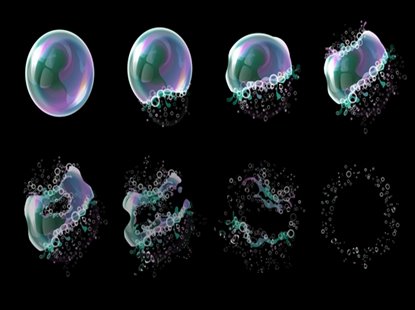Benefits of Using Defoamers to Enhance Operational Efficiency
Benefits of Using Defoamers to Enhance Operational Efficiency
Blog Article
The Role of Defoamers in Enhancing Item High Quality and Performance
In numerous producing procedures, the existence of foam can substantially impede item high quality and functional performance. Defoamers work as important ingredients that reduce this issue, ensuring smoother production workflows while boosting the practical and visual features of the end products (defoamers). Their application covers a wide variety of industries, from food and drink to pharmaceuticals, where consistency and reliability are vital. The choice of the proper defoamer can be critical to accomplishing optimum results, elevating important concerns regarding formulation compatibility and efficiency metrics that warrant further exploration.
Understanding Defoamers
Comprehending the function of defoamers is important for keeping product high quality across various industries. Defoamers are chemical ingredients made to lower and prevent the formation of foam in liquid systems, which can adversely impact procedures such as blending, filling, and surface stress. Foaming can cause inadequacies, item flaws, and endangered visual charm, making defoamers an essential element in making procedures.
In commercial applications, defoamers aid to improve product consistency and stability. The efficient use of defoamers not just ensures smoother manufacturing procedures but also adds to remarkable item performance.
Additionally, the choice and formulation of a defoamer should straighten with particular application needs, such as compatibility with other components, performance under differing temperature and pH conditions, and prospective governing restraints. Ultimately, recognizing defoamers' functions and their relevance in different formulations is critical for enhancing production and making certain the finest final product.
Kinds of Defoamers
Defoamers can be classified right into a number of kinds based on their composition and system of activity. The primary kinds include silicone-based, non-silicone natural, and inorganic defoamers.
Silicone-based defoamers are among the most reliable, primarily as a result of their capability to spread out rapidly on the fluid surface area and interrupt foam formation. Their distinct chemical framework permits for premium stability, making them suitable for high-temperature applications and settings with differing pH levels.
Non-silicone natural defoamers, typically composed of natural oils or fats, are valued for their biodegradability and lower poisoning. These are generally utilized in food and drink applications where safety and security and ecological impact are extremely important.
Not natural defoamers, which include substances like talc or calcium carbonate, act by boosting the thickness of the fluid, thus minimizing foam stability. They are frequently used in industrial procedures where compatibility with various other products is not an issue.
Each sort of defoamer has distinctive advantages and limitations, enabling customized solutions depending on the details frothing problems experienced in various applications. Recognizing these distinctions is essential for optimizing efficiency and attaining preferred item quality.
Applications Throughout Industries
Many sectors leverage defoamers to enhance item high quality and operational effectiveness. In the food and beverage industry, defoamers are critical in procedures such as brewing and dairy production her comment is here to avoid foam formation, which can bring about inefficiencies and item variance. By controlling foam, makers can ensure much better return and a much more consistent item.
In the pharmaceutical industry, defoamers play a crucial duty in the solution of liquid medications, where too much foam can hinder mixing and exact dosing. Their usage aids maintain the integrity of the solutions and helps with smoother manufacturing procedures.
The paint and finishes industry additionally counts on defoamers to improve the efficiency of products throughout application. By minimizing foam, these additives make certain a smoother coating and improve the visual qualities of the end product.
Benefits of Utilizing Defoamers
While the application of defoamers differs throughout markets, their benefits consistently improve product quality and procedure performance. One significant advantage is the reduction of foam development throughout producing processes, which can otherwise bring about production hold-ups and inconsistencies in item high quality. By lessening foam, defoamers enable a smoother circulation of materials, promoting extra effective operations and reducing the chance of devices malfunctions.
Additionally, the usage of defoamers can enhance the appearance and structure of end products. In fields such as layers, paints, and food handling, excessive foam can jeopardize the visual aesthetics and general quality, while the ideal defoamer application guarantees an uniform coating and desirable features. Defoamers can contribute to set you back savings by lowering waste during manufacturing and enhancing the use of raw products.

Choosing the Right Defoamer
Selecting the ideal defoamer is critical for maximizing manufacturing processes and making sure product high quality. The choice of defoamer influences not just the performance of foam control yet additionally the total performance qualities of the final product. Variables to take into consideration consist of the sort of application, the chemistry of the formulation, and the environmental conditions under which the item will certainly be utilized.
Various markets may call for details defoamer types, such as silicone-based, natural, or polymeric defoamers. Recognizing the compatibility of the defoamer with the key components is necessary to prevent unfavorable responses that might compromise item stability. Additionally, the defoamer's performance in various temperatures and pH degrees should be evaluated to make certain constant efficiency.
Evaluating the defoamer in small applications can give important understandings right into its performance and viability. Factor to consider of governing conformity, specifically in food, pharmaceuticals, and cosmetics, is paramount in picking a defoamer. Eventually, a comprehensive analysis of these factors will bring about the choice of a defoamer that not just controls foam successfully but likewise boosts the high quality and efficiency of the end product.
Verdict

In verdict, defoamers are essential ingredients that dramatically boost product high quality and performance across numerous sectors. The calculated selection and application of defoamers lead to cost savings, maximized resource usage, and boosted customer contentment.
Frothing can lead to inefficiencies, product flaws, and jeopardized visual appeal, making defoamers a crucial part in manufacturing operations.

Report this page